Nowadays, using a piece of content only once is uneconomical, not to say wasteful. Just remember how tense and energy-consuming the process of creating content is — take a blog post, for example: interviewing experts, copywriting, making corrections, iterating…
Luckily, the post you sweat over can have more than one life, which means you can create more content with less effort. The key is repurposing content.
What is repurposing content?
Repurposing content, also known as content recycling, means taking some piece of content — either in its entirety, or just some of its parts — and transforming it into a new piece of content. Typically that includes changing the content’s format: for example, turning a blog post into an infographic. The content is usually repurposed for some particular platform or placement, such as in-app stories.
Repurposing implies serious work with the content: rewriting, recompiling, updating, and so on. Repeating some post on your blog once again or reminding your users of an old blog post on your social media doesn’t count as repurposing content.
Three reasons you should repurpose content
Repurposing content is an effective way to simplify the implementation of your content marketing strategy, improve its performance, and even cut some business expenses on the whole. Let’s take a closer look at the three main reasons to repurpose content.
To save the resources of your team
In 2019, a survey showed that most companies claimed to have from one to three specialists on their content marketing teams.
Content marketing teams sizes
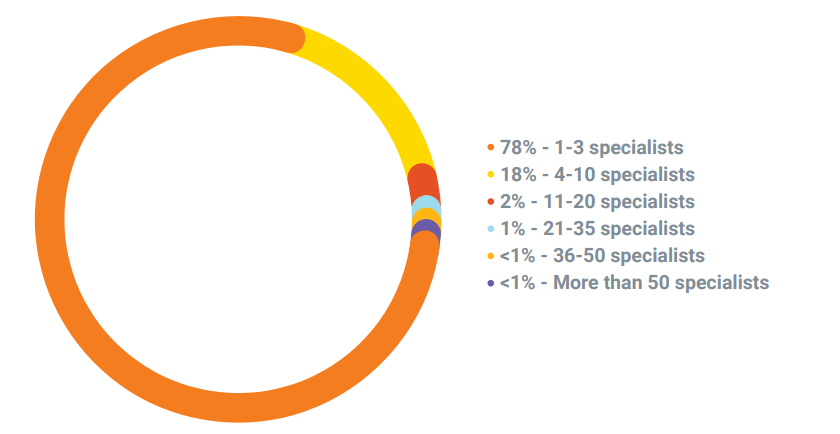 Source: SEMRush
Source: SEMRush
If fortune smiles on a company, it has a writer, an SMM manager, an SEO specialist, and — probably — a designer in its content marketing team. But in most cases, it is a writer who makes up the whole “team” and has to be a one-man army, struggling with all content marketing challenges.
Specialists in a content marketing team
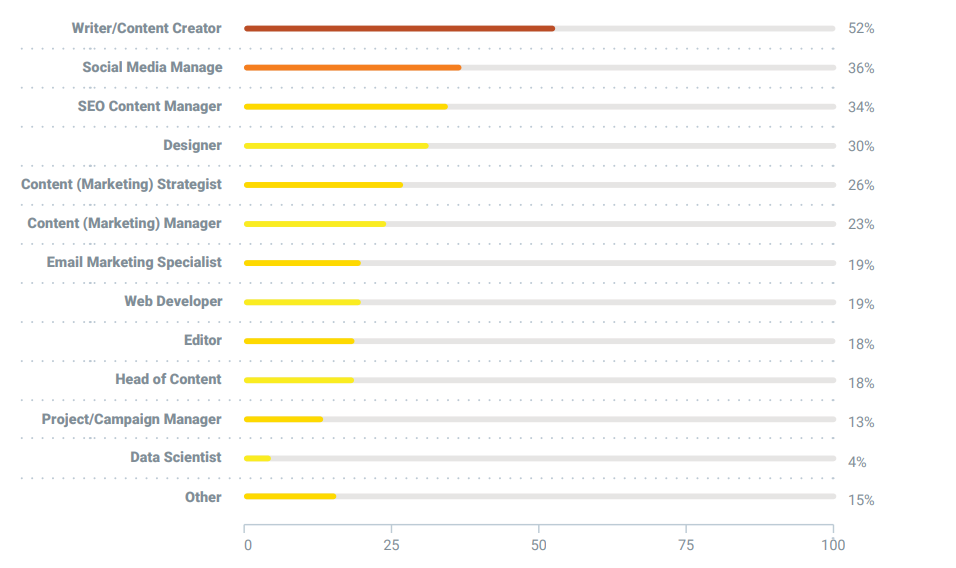 Source: SEMRush
Source: SEMRush
Repurposing, as done based on the existing content, is usually cheaper and faster than creating some piece of content from scratch. Thus, not having to start with a blank sheet, provided with some basic structure and facts instead, your team saves a lot of time when working with content. What’s more, team members save mental bandwidth, remain creative, and less liable to burnout.
To cover different platforms and extend the reach of your content
Different people are biased to different social media, messengers, streaming services, and so on. If a person doesn’t read your blog, they may watch your Instagram stories or listen to your podcast on their way to work.
But, you may be tempted to cut corners: to just place a link to the original post instead of repurposing it. Meanwhile, it’s better to repurpose content — and here are three solid reasons for it:
- Repurposing provides you with more flexibility so that your content can meet all the requirements and limitations of the platform and look native, overall. For example, it will be far more effective to split a long read into little pieces of text for a series of Instagram stories than just add a link;
- You don’t need to redirect your audience and make them leave their favorite platform to get your content. It forms a better, holistic user experience. In simple words, your audience will be more satisfied with interacting with your brand.
- In all likelihood, you’ll generate more content.
Take a look at how ToDoist shares some stats on their Instagram: instead of giving a link to a full survey, they create an image tailored to the platform. They can keep creating similar posts — apparently, they have more interesting stats on their app usage.
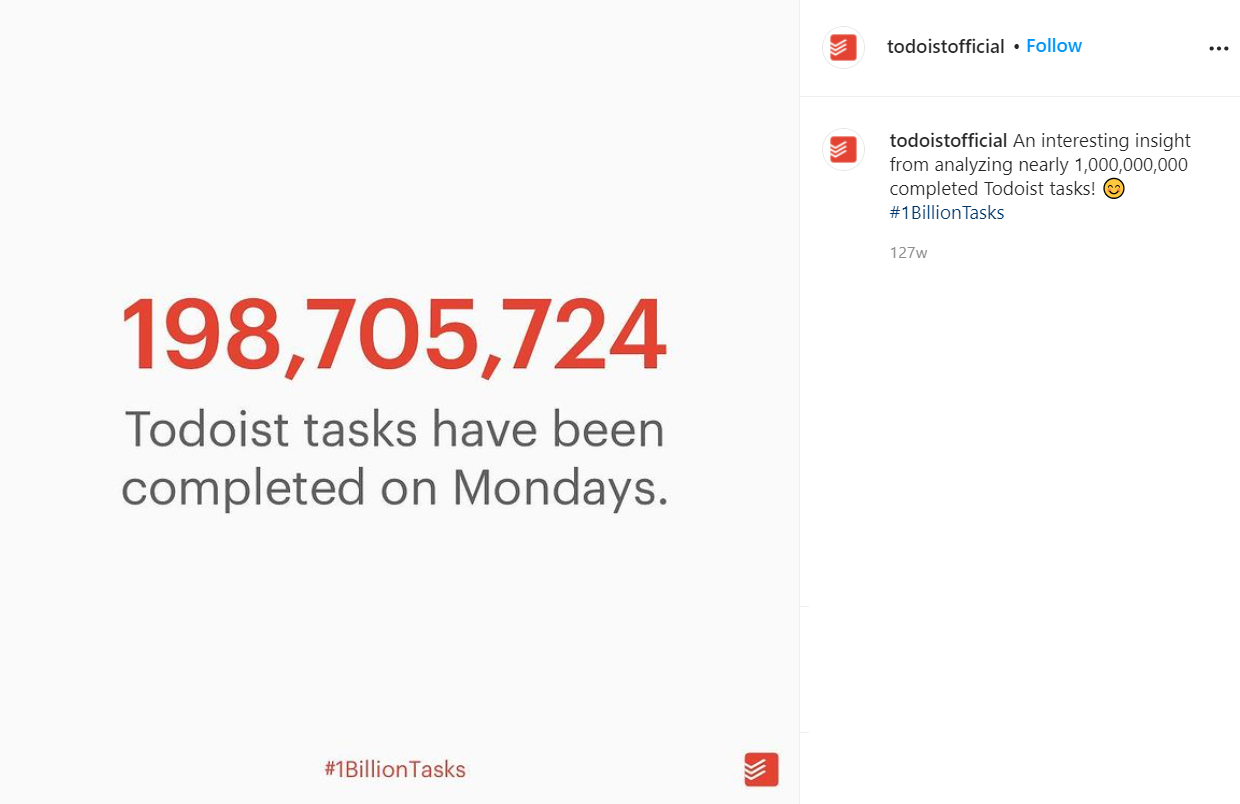 A piece of stats shared by ToDoist
A piece of stats shared by ToDoist
To cut business expenses
As we’ve figured out above, repurposing content is simpler than creating new content from scratch. That means you can delegate it to a freelancer who is cheaper than an inhouse full-time employee.
Repurposing can also help you save on implementing your content marketing strategy. For example, due to discovery and recommendation features, you can attract new audiences organically so you don’t have to launch paid ads to get new subscribers. Also, you can raise the awareness, credibility, and loyalty towards your brand because content lets you have more touch points with your audience.
How to find content that is worth repurposing
As with many other content marketing issues, analytics will come in handy. Check Google Analytics or the other tool you use to find content that performs the best. Take into account indirect indicators of its performance: comments, shares, and more.
Second, keep your ears to the ground: always be aware of new trends in your industry, and watch your competitors.
This is the content you’re looking for:
Here is an example of how evergreen content can be repurposed. Headspace has an evergreen post on establishing a sleeping routine on their blog. Some pieces of advice from this post, such as having a cut-off time for work emails after dinner, appear regularly in the form of Instagram carousels.
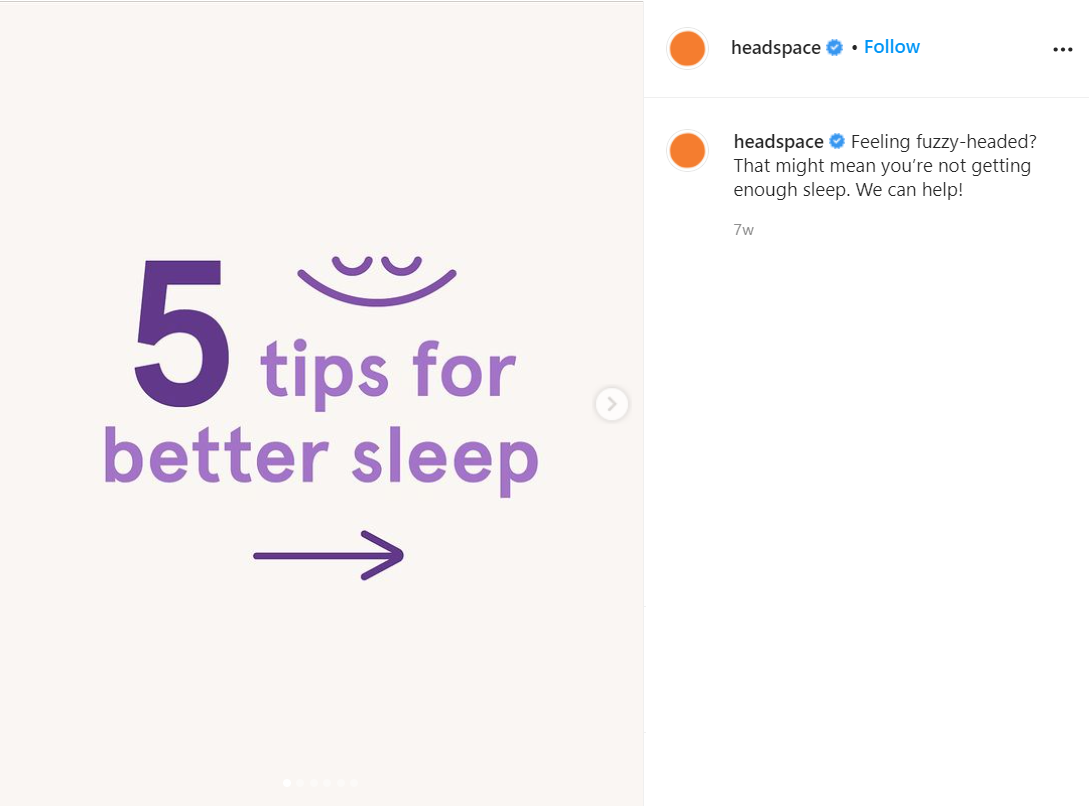 Headspace’s post on Instagram
Headspace’s post on Instagram
Give preference to long reads filled up with information, for example, white papers, original studies, guides, and more. Repurposing such content can be much simpler: you don’t have to search for new information and add up anything — just split it up and edit.
How to repurpose content
When it comes to repurposing, you can’t limit all the work to updating and rewriting. As a rule, repurposing requires changing the format: from text to image, from video to text, and so on.
Here are some techniques you can use — separately or in different combinations — to repurpose content.
Split
One of the simplest things you can do is to split a piece of content into smaller pieces. For example, this very post could be separated into several: the first one could be dedicated to the benefits of repurposing content, the second one could be a guide or a checklist on repurposing content.
Resize
Almost all information can be expressed in shorter words, so resizing is a widely used technique in repurposing content. We can see it especially clearly when it comes to creating social media posts.
Take a look at the example from Nanit. They take their blog post on four month sleep regression, shorten it to write an Instagram post, and shorten it one more time to create an image.
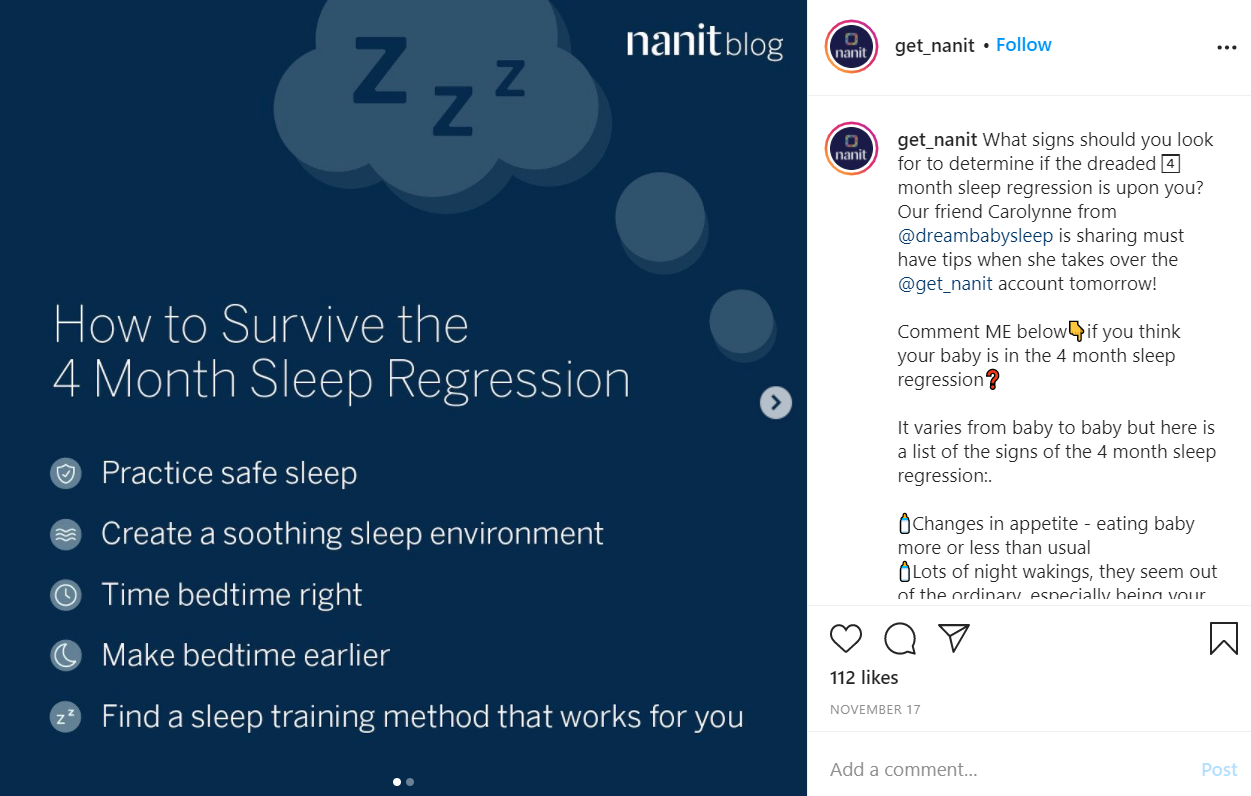 An example of resizing content from Nanit
An example of resizing content from Nanit
Compile
Remember that you can not only split but also merge content. For example, create a white paper out of several blog posts; a bunch of case studies can become an industry guide.
Popular formats for repurposing content
Your format choice depends on your business goals, your audience’s preferences, the type of content you already have, and many other factors. There is no universal advice — just try and see which is best for you.
If you feel stuck and lack ideas on how to repurpose content, check out our matrix.
| From |
Into |
| Blog post |
Newer blog post / series of blog posts
Email / messenger digest
Checklist
Social media post / series of posts
Social media stories / series of stories
In-app stories / series of stories
Infographic
Quiz / test |
| A bunch of blog posts |
eBook / white paper
Email / messenger digest
Checklist
Social media post / series of posts
Social media stories / series of stories
In-app stories / series of stories
Infographic
Quiz / test |
| eBook / white paper |
Blog post / series of blog posts
Email / messenger digest
Social media post / series of posts
Social media stories / series of stories
In-app stories / series of stories
Checklist
Infographic
Quiz / test
Video tutorial
Podcast
Webinar
Online course |
| Case study |
Social media post / series of posts
Social media stories / series of stories
In-app stories / series of stories
Infographic
Video script
Template |
| A bunch of case studies |
Industry guide
White paper |
| Success story |
Social media post / series of posts
Social media stories / series of stories
In-app stories / series of stories
Infographic
A landing page block
Video script
Template |
| Guide / manual |
Blog post / series of blog posts
Social media post / series of posts
Social media stories / series of stories
In-app stories / series of stories
Email / messenger digest
Video tutorial
Infographic
Video script
Quiz / test |
| Interview |
Blog post / series of blog posts
Social media post / series of posts
Social media stories / series of stories
In-app stories / series of stories
News |
| Research / internal stats |
Blog post / series of blog posts
Social media post / series of posts
Social media stories / series of stories
In-app stories / series of stories
Email / messenger digest
News
Landing page
Infographic
Video script
Quiz / test |
| Landing page |
Blog post / series of blog posts
Social media post / series of posts
Social media stories / series of stories
In-app stories / series of stories |
| Infographic |
Social media post / series of posts
Social media stories / series of stories
In-app stories / series of stories |
| Online course |
Blog post / series of blog posts
Social media post / series of posts
Social media stories / series of stories
In-app stories / series of stories
Email / messenger digest
Guide / manual
Quiz / test
Template |
| Video tutorial |
Blog post / series of blog posts
Social media post / series of posts
Social media stories / series of stories
In-app stories / series of stories
Guide / manual
Template
Quiz / test |
| Podcast |
Blog post / series of blog posts
Social media post / series of posts
Social media stories / series of stories
In-app stories / series of stories
Email / messenger digest
News
Quiz / test |
| Webinar |
Blog post / series of blog posts
Social media post / series of posts
Social media stories / series of stories
In-app stories / series of stories
News
Quiz / test |
Now let’s have a closer look at the most frequent cases.
How to repurpose blog content
A blog post is the most popular type of content that brands produce, a survey shows.
The types of content brands produce
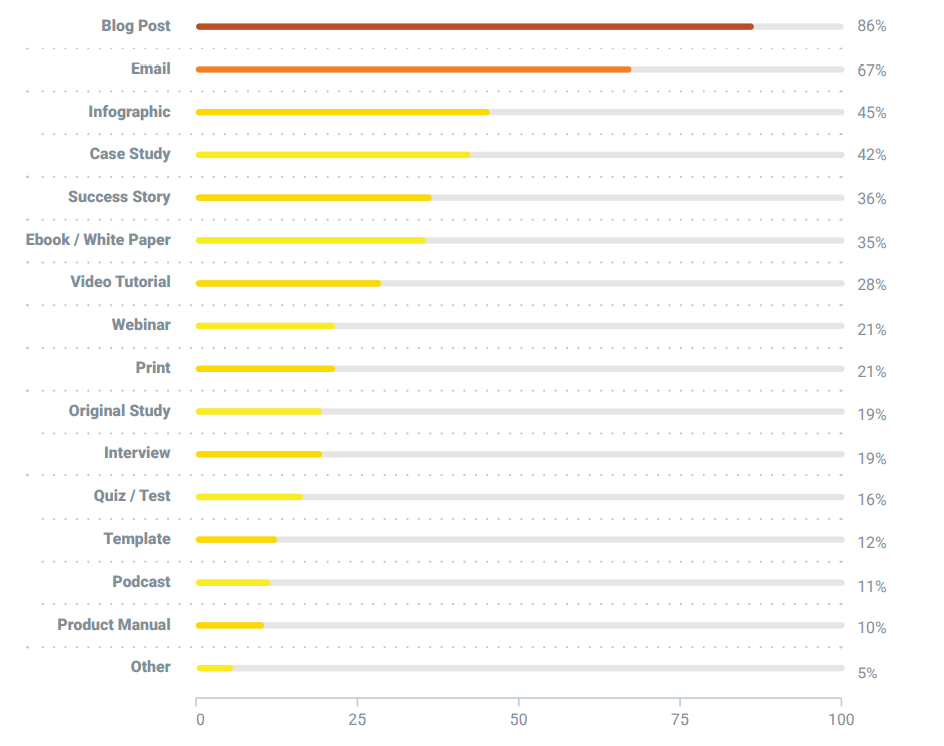 Source: SEMRush
Source: SEMRush
Blog post → email. It can be either an informational one-topic email or a digest with some abstracts from your blog posts.
Here is our own example. Every month we send a digest of our blog posts to our subscribers. For each post, we outline some main ideas.
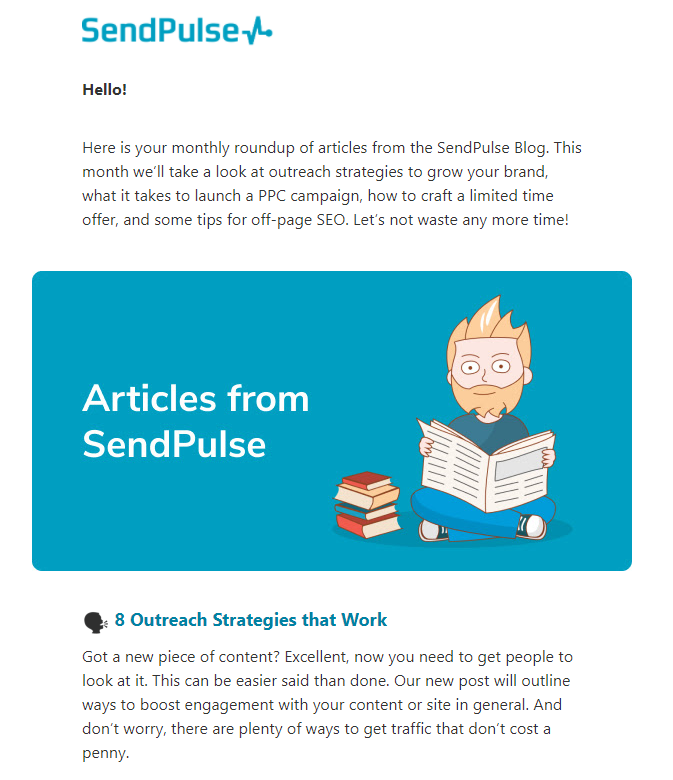 SendPulse’s email digest
SendPulse’s email digest
Blog post → infographic. This is a universal combination when you need to switch to a visual format instead of text. The big advantage of an infographic is that it can be used without changes on many platforms — from your blog to Pinterest.
Here is an example of an infographic made out of a blog post. Buffer puts it into their account on Pinterest and adds a link to the original blog post as well.
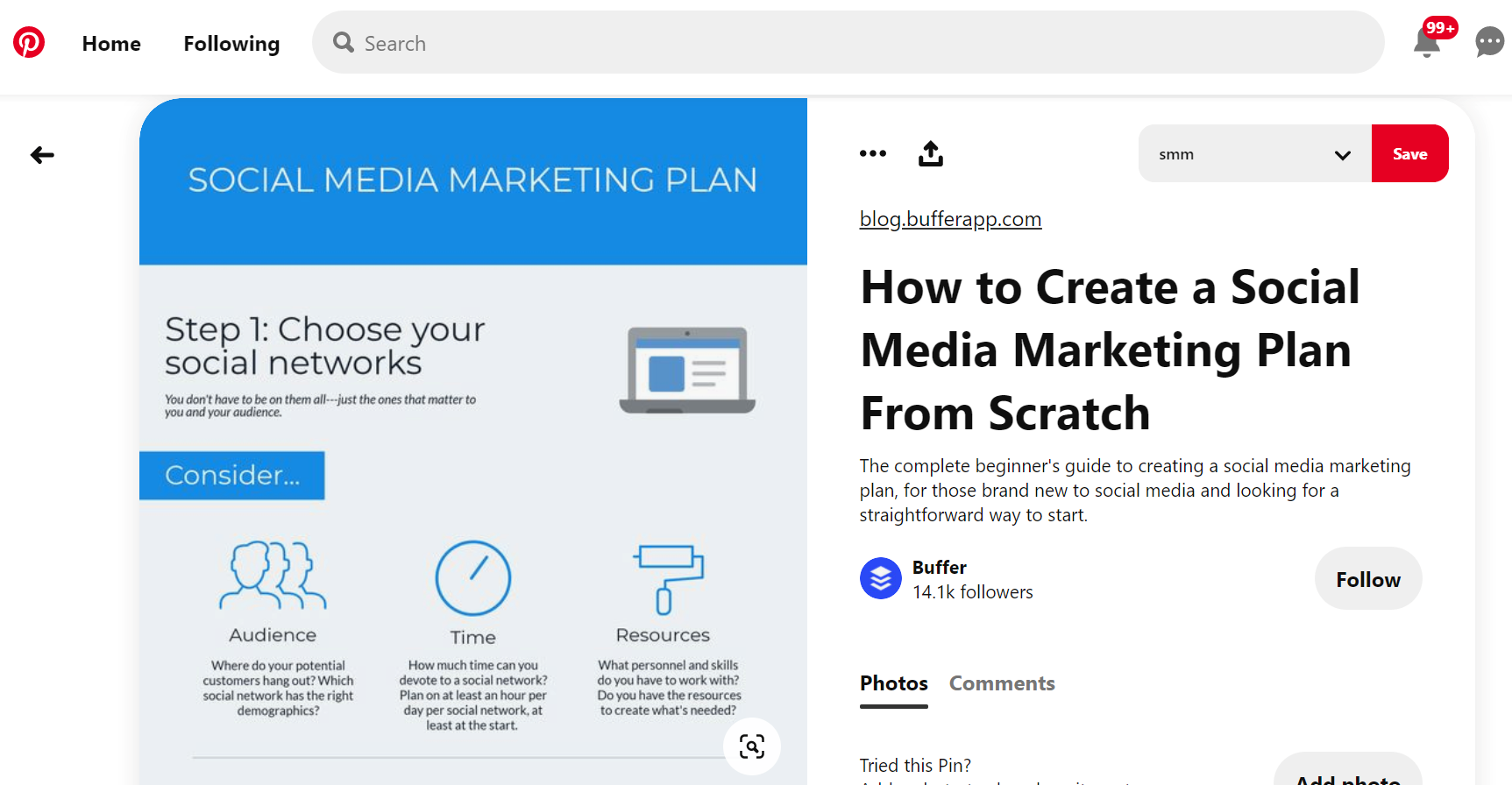 An infographic from Buffer
An infographic from Buffer
Actually, Buffer can be recognized as a pioneer in the sphere: their no-new-blog-posts monthly challenge, held in 2015, has become a chrestomathic example of repurposing content.
How to repurpose a success story
Success story → infographic + a template + a social media post + feedback. When creating infographics, do not limit yourself to just retelling the facts and numbers from a success story: you can add some bells and whistles to make the final image look even more inviting.
Here is how ToDoist reinvented success stories — there are a lot of them on their blog. The brand combines an infographic and a template — which is actually a piece of UGC — to show the product in action. There is also positive feedback — a review from a loyal user.
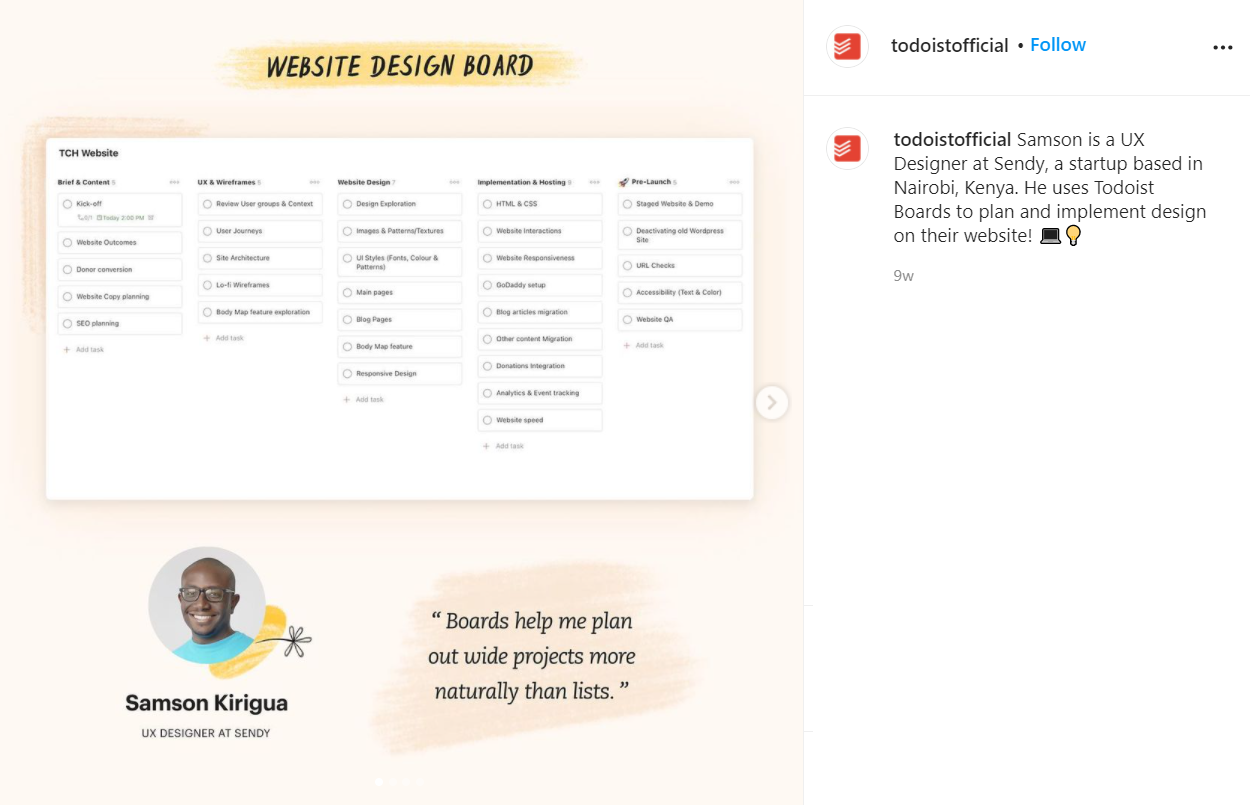 An Instagram post from ToDoist
An Instagram post from ToDoist
How to repurpose a podcast
Podcast → blog post. Probably, it’s the easiest way to repurpose content: in fact, you just have to transcribe the podcast and clean the text up.
For example, ToDoist has a podcast called Office Hours, and its topics often resonate with the posts in their blog.
How to repurpose a video
Video → blog post. It can be a webinar or a Q&A session. What’s especially good is that you interact with your audience while preparing and recording a video. Thus, you can learn which topics and types of content your audience wants to see.
For example, ToDoist borrowed some ideas from a Q&A session about remote work and created a related blog post. They can actually develop this topic further and finally create an eBook on organizing processes within a remote team.
Common mistakes in repurposing content
Though, in general, repurposing is relatively simple and intuitive, some mistakes can still occur.
Just cutting text instead of editing
Cutting doesn’t mean editing: you should always make sure that resized content still makes sense. As a rule, you can’t just take out some piece of text from a blog post — you should always bring some of the context, or, at least, paraphrase it.
Take a look: Forbes does exactly the opposite, cutting only a quotation out of the whole article. Luckily, this quotation is quite clear and powerful itself; what’s more, provokes a discussion, engaging a lot of people.
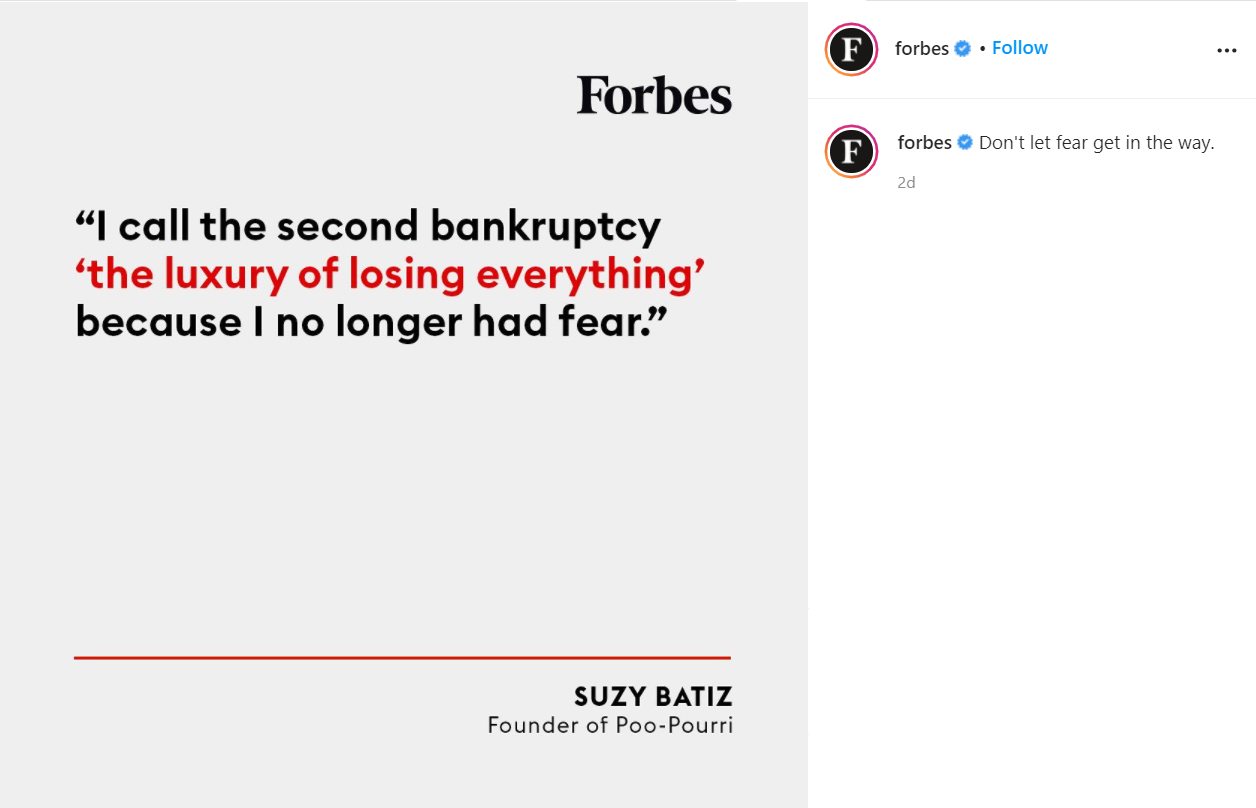 A post on Forbes’s Instagram
A post on Forbes’s Instagram
But this successful case is more of an exception: if the quotation were not that clear and impressive, the post would get no attention. Be careful when trying to repeat that, especially if you are a brand, not a media outlet.
Not thinking enough of distribution
Think over the time and resources you need for publishing not so that you don’t bomb users with the same content at once: you risk overloading and annoying your audience instead of improving the reach of your content.
Make sure that your content will be delivered to the audience at the right time and through your preferred channels. Luckily, you have SendPulse to deal with it. Our service allows you to reach your audience by sending various types of messages through email campaigns, web push notifications, SMS, and chatbots for Facebook Messenger or Telegram. Creating communication flows is simpler than ever before — sign up and check it out.
Ignoring the platform’s standards and restrictions
Text is known to be the cheapest and fastest in production content; so a temptation to repurpose content only into the form of text can occur. But you shouldn’t forget that many platforms are visual in their essence, so images and videos will be more appropriate and effective.
Wrapping up
Repurposing content is a powerful strategy that may help you significantly enhance your content performance and your content marketing implementation, without overloading your team.
But do not forget that there are far more techniques to improve your content performance, such as syndication, search engine optimization, updating content, and more.
Stay productive and creative!